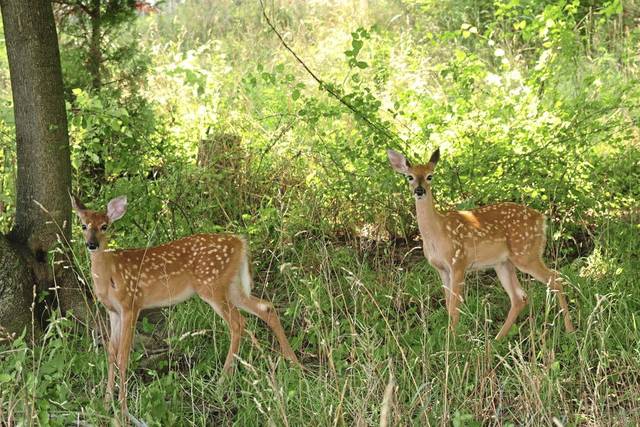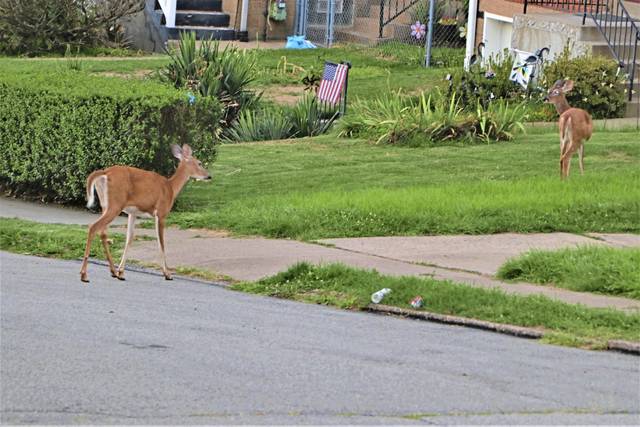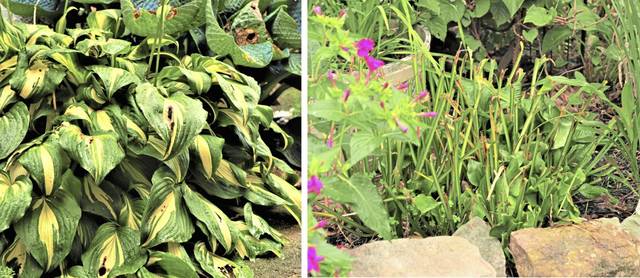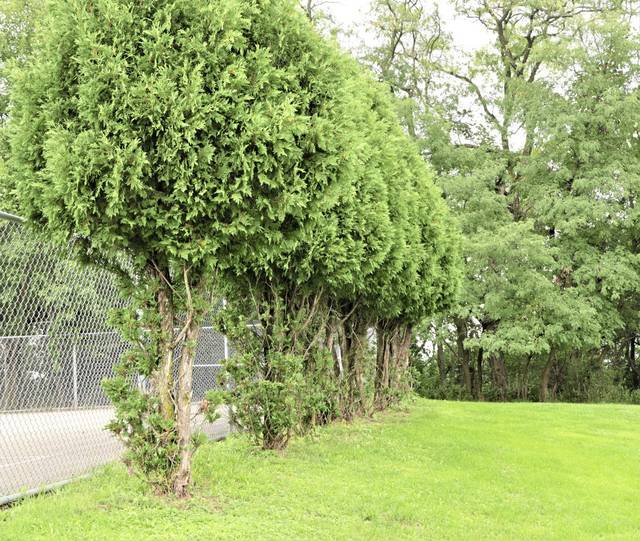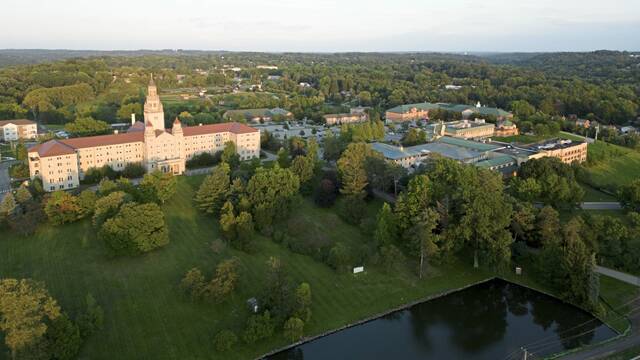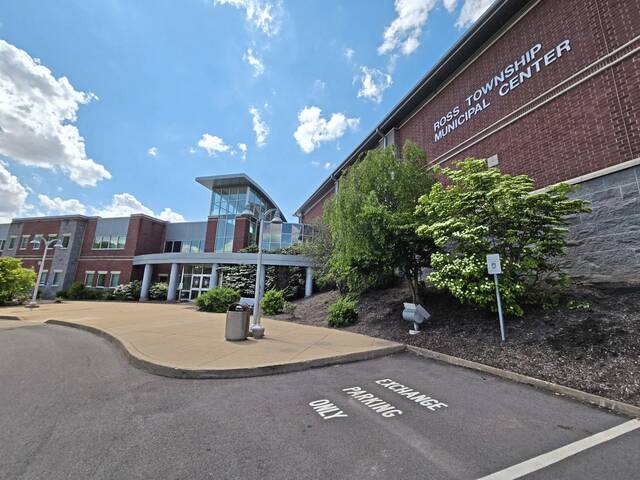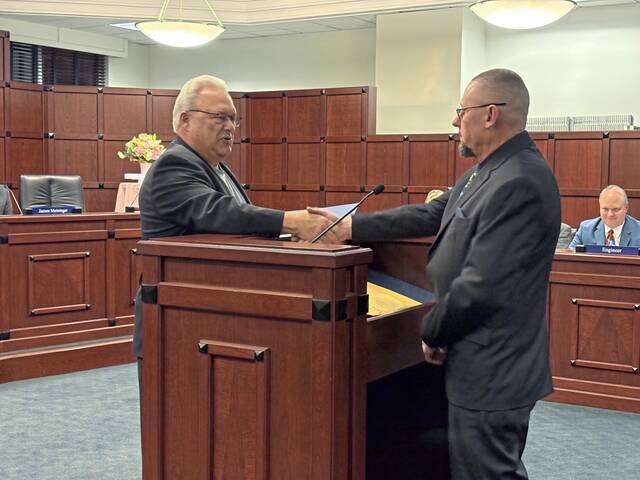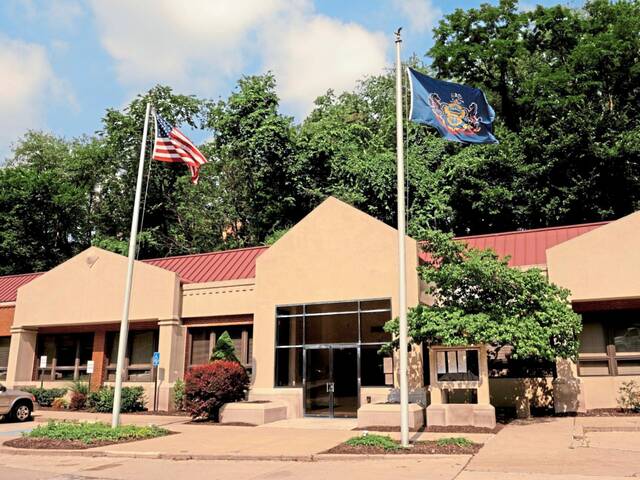The herds of roaming deer causing vehicle accidents, spreading Lyme disease through the ticks they carry and gnawing away at expensive landscaping may soon have one less place in the North Hills to escape the hunter’s snare.
McCandless council has given town planning commission member Dan Kortum the green light to develop a plan to thin the deer population, which could include an organized archery hunt. In his presentation to council, Kortum cited Ross’ recent efforts to address the problems caused by a burgeoning deer population.
In June, Ross council approved a measure to allow archery hunters on public land beginning this month after conducting a study that showed the measure was the best way to reduce the exploding population. Hunting on private land will be allowed with the permission of the owner.
Ross’ program is being coordinated by Suburban Whitetail Management, the same company that has organized hunts for the past three years in Franklin Park.
“We feel like it’s been a successful program,” said Rege Ebner, Franklin Park’s manager. “A lot of the meat that is harvested is donated to a good cause and the hunters have been able to get out into the woods to hone their skills.”
About a dozen hunters participate in Franklin Park’s annual hunt, which typically yields a harvest of about 40 deer.
The first and third deer a hunter bags is donated to the charity Hunters Sharing the Harvest, which has operated a venison donation program in the region for nearly 30 years.
Hunters also are only permitted to take doe, which can make a significant impact on cutting the deer population without the risk of eradication.
Pennsylvania Game Warden Zeb Cambell said the speed at which deer can multiply is illustrated by an experiment conducted in Michigan in 1927.
Researchers released six deer into an enclosure and by 1933, their number had increased to 160.
“Deer can multiply fast and they have no natural predators here,” Campbell said. “As a community becomes more densely populated, they start to see an increase in the number of vehicle accidents involving deer and the destruction of landscapes.”
Changing landscapes
While dense suburbs such as Ross have had to take action to trim the deer population, it does not yet appear to be a large enough problem for officials in Richland to address.
“We get some of the standard complaints about damage to shrubs and car accidents, but it’s not a great number,” said Scott Shoup, the township’s engineer. “I think that might be because a good bit of Richland is still rural.”
Campbell said people in rural areas may already be controlling the deer population and not know it.
“There tends to be more people actively hunting in rural areas,” he said. “But an organized hunt may still be a good way to improve the health of the deer population by ensuring there is enough food.”
The game warden warns against people putting food out for deer, which can cause more harm than good.
Consuming food other than what is available naturally can result in serious digestive problems for deer during certain times of the year, according to the game commission.
Deer also can become habituated to eating from artificial food sources and stop searching for food in the wild, further risking their ability to survive.
Chronic Wasting Disease —a contagious condition that is fatal to deer — also is spread through saliva when healthy deer eat from food piles that have been tainted.
Ross enacted a feeding ban in 2018 as a first step in its plan to thin the deer population.
Campbell said even if municipalities don’t sanction organized hunts, they should at least gather data on things such as vehicle crashes involving deer to see if the problems are increasing.
Municipal officials also can ask residents to report property damage caused by deer and query them on whether they think the deer population is too large.
“They should study the data they collect and talk to residents,” Campbell said. “Ask them whether they are concerned about Lyme Disease from deer ticks, how they feel about deer hunting programs and whether they think someone should come in to help reduce the deer population.”
Ross surveyed residents and held several public meetings that drew scores of people before deciding to proceed with an organized hunt.
Luke Leonard, co-owner of Suburban Whitetail Management, said it’s preferable for a municipality to get involved with developing a deer management program because it typically opens up access to public land for hunters.
But even without a municipality’s approval, residents and other groups can develop their own program to control the deer.
“Basically our program connects communities with hunters,” he said. “The idea is to put hunters in areas that otherwise would not be accessible.”
Leonard said people can hunt on their own land or invite others to do so if the property is large enough for it to be done without breaking state game laws that regulate how close to occupied buildings hunting can take place.
“We regularly get calls from people asking why the program isn’t being done in their community,” Leonard said. “We only get involved if they reach out to us. So if they want us to help organize something, we can help.”
Property owners and potential hunters can contact Leonard or co-founder Mike Clinebell by email at suburbanwhitetailpa@gmail.com for more information.
Hunters supplied by Suburban Whitetail Management must demonstrate their skill with a bow and undergo background checks and other requirements. Contact information, including details about the vehicles they are driving and where they will be hunting, also are supplied to local police.
Spreading a wider net
Campbell said while there still are benefits when a municipality takes steps to curb the deer population, greater success can be achieved when communities are doing it simultaneously.
“Over time, Ross will begin to see a dwindling of the deer population as a result of the hunts,” he said. “But if they are doing it and McCandless and other nearby communities aren’t, there’s still going to be a bunch of deer who will begin to move into other communities.”
Pine supervisors passed a deer management policy in 2014 that outlines a variety of ways to control deer — along with the advantages and disadvantages of each method. The 17-page policy is based on state game commission recommendations and lists hunting as the most effective way to thin the deer population.
According to the policy, the township will assist residents who file complaints about deer problems by developing a plan to control the population, if warranted.
Implementation of any of the herd management methods in the policy must be approved by the board of supervisors, the policy states.
The policy also gives the township authority to use outside sources to assist with deer management, including controlled hunts with the permission of property owners.
Township officials did not return repeated requests for comment about the policy.


